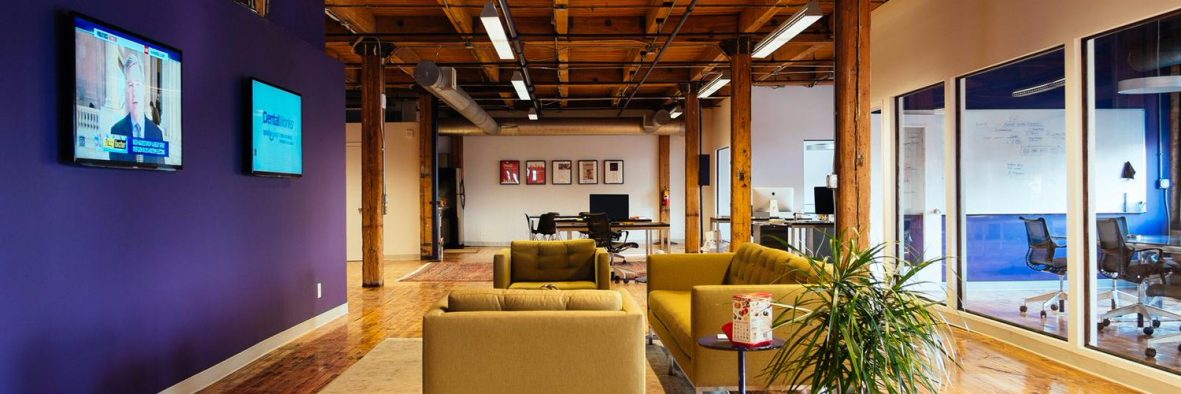There’s plenty of literature about planning the “first 100 days” in your new job, but none that accounts for an overlap with a global pandemic. I hit that 100-day milestone in my new role as head of communications, marketing and engagement at Purple on day 25 of social distancing during the COVID-19 crisis.
It’s been a unique experience, trying to build something new with a company while the world feels like it’s falling apart. Instead of marking the 10th anniversary of Purple and its new brand and sharing stories from the team’s success, which was a key focus of the original 100-day plan, we’ve been retooling our business together day by day, and week by week, so our teams have what they need to support Purple clients in preparing for and navigating the immense changes they face – and feel supported themselves as they navigate the changes in their own lives.
I can’t say that creating a pandemic roadmap to add to the “first 100 days” literature was something we set out to do. But I can say we’ve taken steps that are proving to be successful at this moment. The culture built here over 10 years, that I learned in person for 45 days, and that we’ve been adapting every day since, has positioned our company and team to navigate this change as best as we could hope for, under the circumstances. To the extent that it might be helpful to anyone else managing these times as a communicator or leader, I wanted to share some of the ways we’ve been navigating it all.
(1) Keep leaders accessible.
During normal times, Purple’s COO and operations team hold a joint open office hours every other week as a standing opportunity for any employee to drop in to ask questions, discuss issues, provide feedback, suggest new ideas, and just in general have an audience with the person running the business day to day. Since this crisis began, our leader doubled down: these open office hours now happen weekly, and virtually. People videoconference in with their morning coffee in hand and talk about what’s happening with clients, what’s happening in our homes, what has us worried and what has us laughing. At a time when there might be more questions than answers, some leaders might be tempted to limit these types of activities in favor of more controlled formats. Don’t. Keep your leaders accessible, and if you are a leader, BE accessible. Your employees need to see you now more than ever.
(2) Communicate frequently and transparently.
We’re on week eight of having at least one COVID-related, all-staff communication per week, which are then reinforced on client teams, in group meetings, and during 1:1 check-ins. Beginning the first week of March, these communications covered new cleaning procedures and reminders to stay home when sick, then moved on to suspending work travel and mobilizing all staff for extended, fully remote work. Next were “abundance of caution” notifications of potential exposures we’d learned about, and how we were going to keep our culture alive while physically apart. Then we moved into messages starting to discuss openly the difficult decisions we’re having to make and the longer-term business realities from which no businesses are immune. We’ve had messages that bring levity and some that bring a gut-punch, but they’re frequent, authentic, and candid. It might be tempting to go silent when you don’t have good news to share or all the answers to deliver, but that approach will not work right now. No one expects their leaders to know what the outcome will be, but they do expect to know the inputs – what actions you are taking. And they want to know they can trust you to be honest and clear.
(3) Embrace humanity.
For years organizational culture people have been advocating for making work more human. The sudden, forced integration of our working and non-working lives has put these issues into stark relief. Overnight, many of the responsibilities we shoulder outside our office walls have shown up on Zoom and BlueJeans screens for our colleagues to see. One of our first cultural expectations we set for this time is that there is no reason to hide these responsibilities. We encouraged our team to re-design their own personal work day as needed – however unconventional that needed to look – to time block for child care, elder care, home schooling, dog-walking, personal fitness, mental health breaks or whatever personal responsibilities that now need to be addressed differently in this new environment. And we encouraged the free sharing of this information among teams and on Slack statuses. It’s common now to see laundry-folding, kid-hair-brushing and baby-handoffs during calls – this is encouraged and modeled from the very top of our company, and our team members feel more supported and less anxious because of it. It is critically important that you visibly embrace your humanity right now, especially if you are a leader. Don’t be a work-life ninja. By openly modeling your work-life integration, you give your team permission to do the same.
(4) Adapt meaningfully and apply new learning quickly.
One of the things that became clear fast during my 45 days in person is that Purple people love meetings. These aren’t the meetings you hear about in office jokes and memes and “shoulda been an email” comments; these are meetings that have meaning. Whether it’s a blue sky ideas session, a targeted brainstorm, or an insights workshop, meetings at Purple are not a spectator sport – engagement is essential. So when many of our colleagues were suddenly having to run pandemic home schools during the hours when they were used to being fully free to engage in these meetings, we quickly and collectively knew we needed to adapt our approach to meetings. Our client teams each circled their wagons to reassess and scale back the number of meetings on the group calendar and worked to free up blocks of time for team members to do uninterrupted work. Our in-house brainstorm and meeting facilitation experts rallied to develop and roll out best practices for virtual meetings in the current climate. And a few weeks into our new work-from-home arrangements, we hosted a virtual happy hour to share best practices across teams and workshop even more ideas for adapting campaign, project and team management in this environment. Even the strongest or best-loved elements of your work culture might need to change right now to accommodate new workplace realities. Tap into your teams’ experiences and insights to experiment, assess, adapt and reset. The adaptations you make now don’t have to become permanent if you don’t want or need them to – by definition, we’re in an in-between state. Stay open and flexible to evolution and new possibilities.
(5) Build culture constantly.
In addition to their love of meetings (as explained above), Purple people love being around Purple people. I didn’t need all 45 in-person days to learn this; I learned it day 1. And as a student of organizational culture, I love it. People eat lunch together, serve on committees together, plan happy hours and book clubs together, do improv comedy together, travel to all the NCAA Final Fours together – in short, the fabric of Purple is woven tightly. Anyone lucky enough to be part of a company culture like this, knows that the physical distancing of this pandemic time period was a shock to the system. But this team didn’t miss a beat. Everyone owns culture at Purple, so everyone has been part of the solution. New Slack channels have emerged to replace some of the informal connections, and chatter on existing channels has increased. After 10 years of gathering in person, we held our first-ever, all-virtual, all-staff meeting. We started an “At Home With Purple” employee profile series, each day sharing little-known details about one colleague’s life at home. We’ve joined one virtual happy hour to discuss the Fyre Festival, one happy hour to discuss Tiger King, and a host of others, just to keep connections alive. Every company culture is different, and each one is precious. During this relentless change, do everything you can to keep yours alive. Let your “how” shift and adapt as needed, but keep your “why” sacred. It doesn’t show up on a financial statement or dashboard, but it will be one of the most valuable assets you’ll have when we emerge on the other side of these challenges.
My new colleagues have spent the bulk of my first 100 days at Purple focused on helping our clients to prepare for and manage the most significant change of their lifetimes, while I’ve been working with our team to do the same on behalf of Purple. We haven’t gotten everything right, but I hope what we’ve learned might help someone else as they chart a course through their next 100 days.
(A version of this article first appeared on LinkedIn)

 AI and Paradigm Shifts on the Minds of Healthcare CEOs
AI and Paradigm Shifts on the Minds of Healthcare CEOs  Purple Strategies Elevates Three To Partnership Group
Purple Strategies Elevates Three To Partnership Group